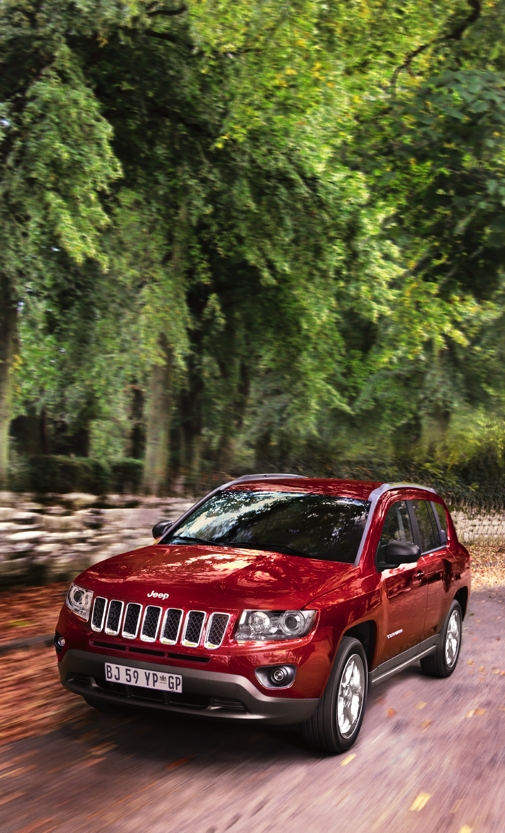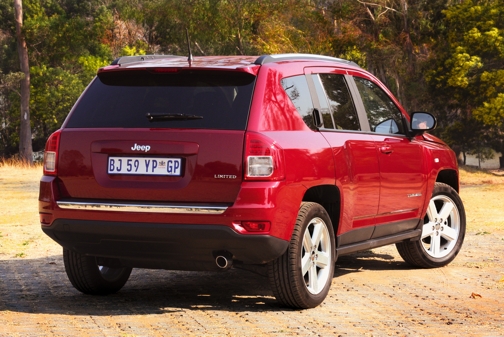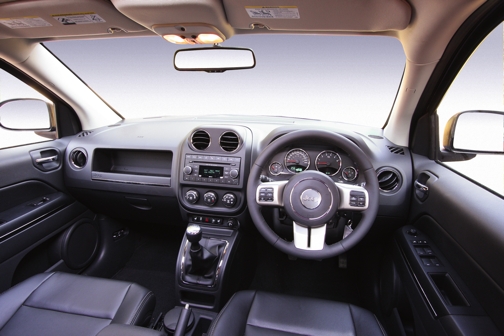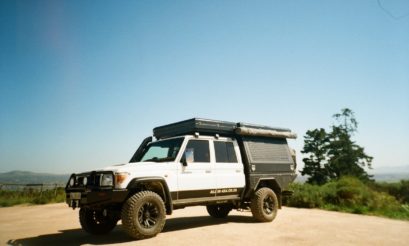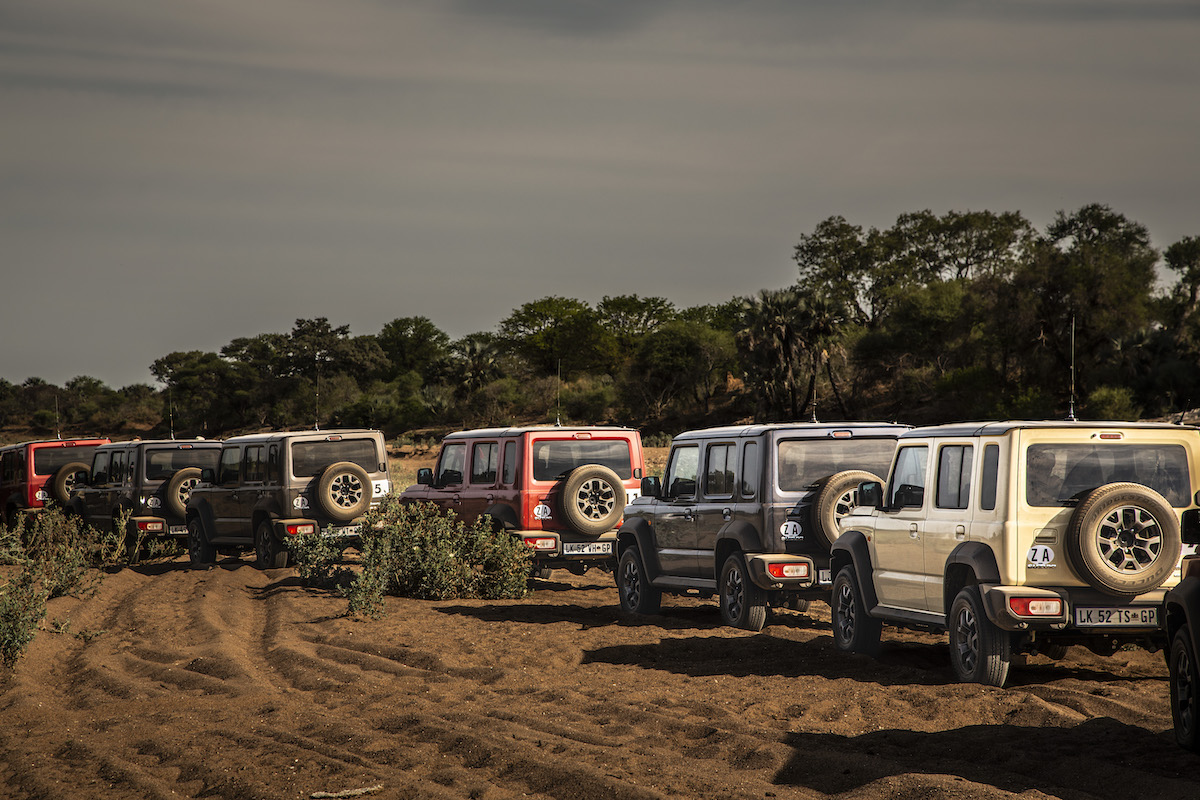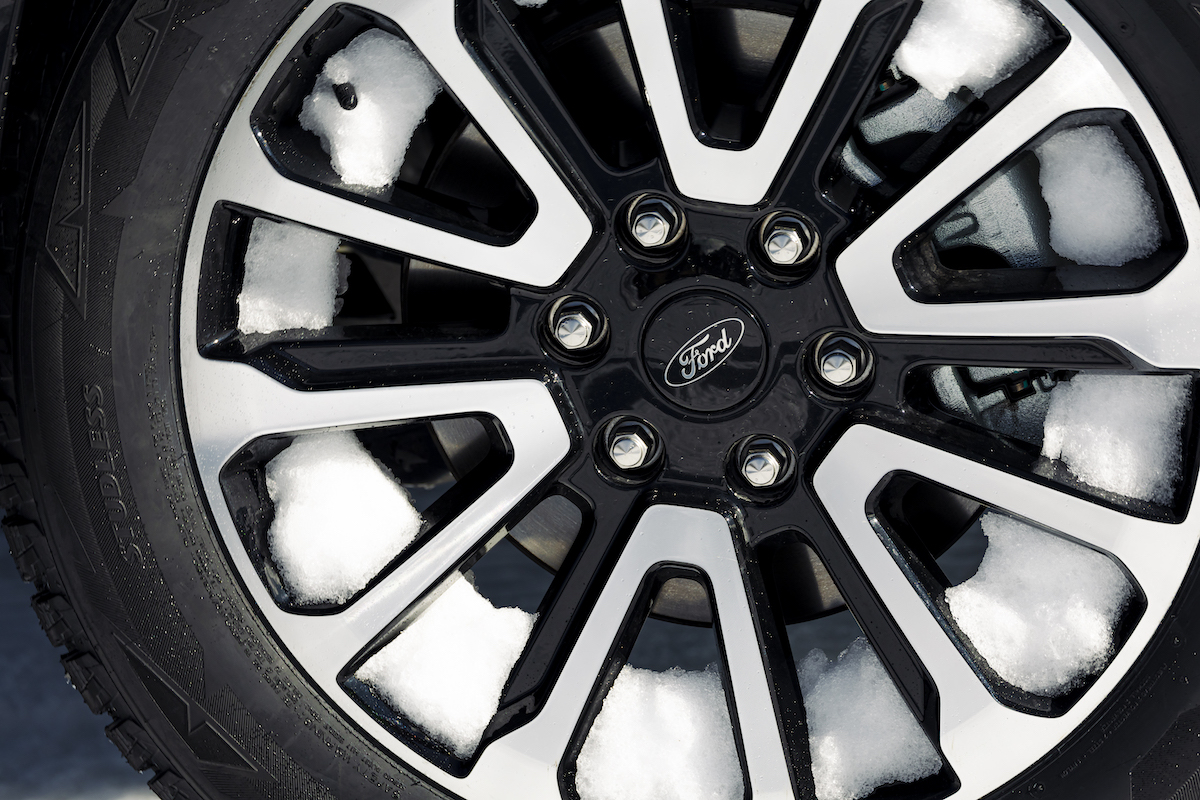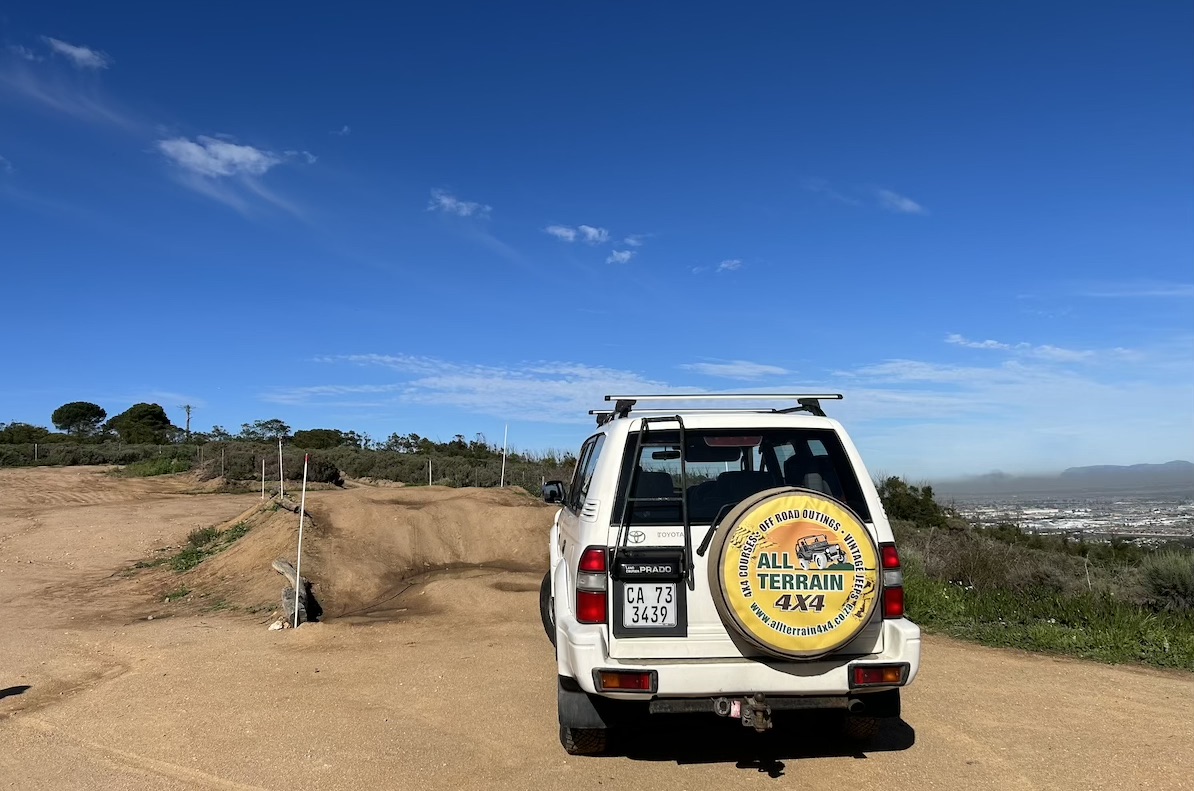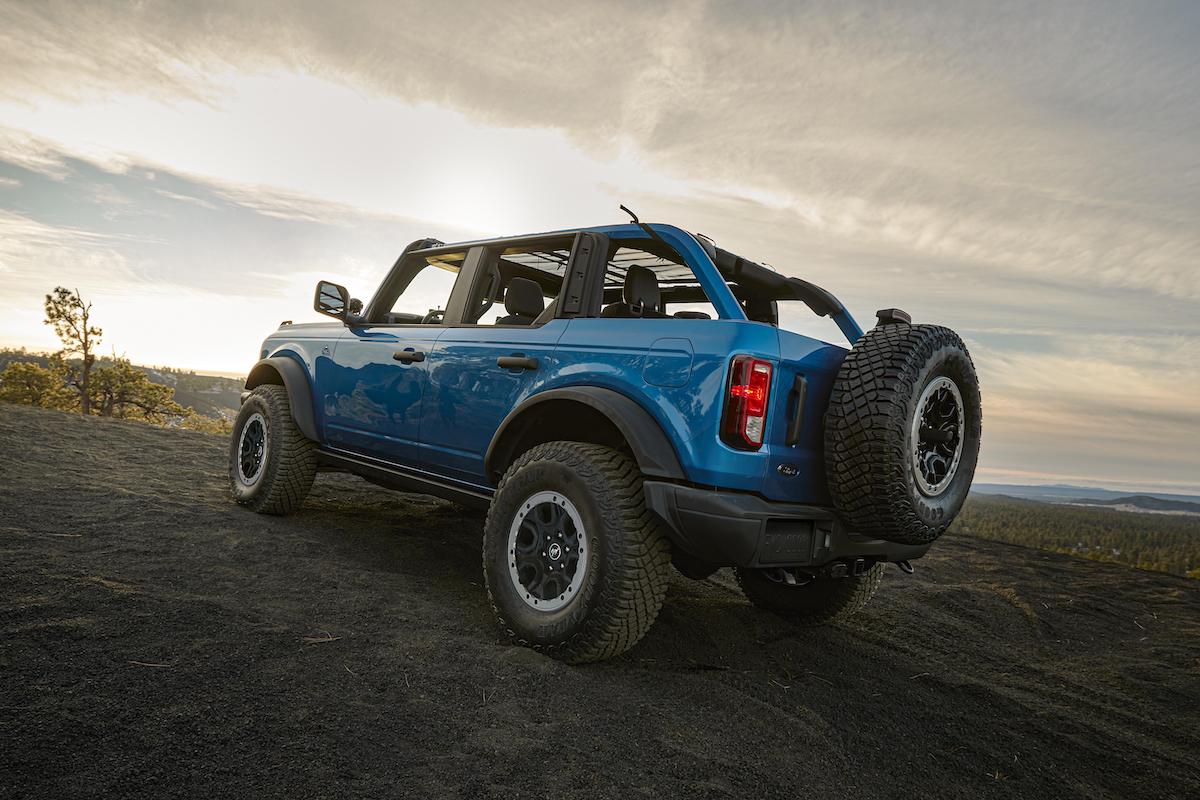road Test JEEP COMPASS 2.0 LIMITED
Turning a (slow) new page
There is a general consensus in the motoring fraternity that you don’t get bad cars anymore, just ones that are better than others. Some punters, though, still reckon the original Jeep Compass should be classified as “a bad car”. We put the latest Compass through its paces to see where it slots into the bigger picture of good or bad
A couple of decades ago, a marketing executive promoting the idea of two-wheel-drive Jeeps and Land Rovers would have been laughed out of corporate headquarters.How the world has changed. So, along with diesel-powered Porsches, we now accept without so much as a batted eyelid the thought of Jeep and Land Rovers that not only drive just two wheels, but the front ones, nogal. Soon we’ll be doing 4×4 driving courses by correspondence.
Of course, two-wheel-drive means less complexity, less cost, less weight and more space in the cabin. It’s the way to go if you want to build a compact SUV-lookalike.
And so to this update of the Jeep Compass Limited, which has been missing from local price lists since early 2010 and is now back and very clearly positioned as the entry point to the brand.
In the past, the Compass and Patriot ranges overlapped price-wise, with a shared 2,4-litre petrol powerplant and 4×4 drivetrain sans low-range adding to the confusion.
The “new” Compass redraws the lines more clearly.
But it is more than a little ironic that, at the moment Jeep is celebrating its 70th anniversary, the company introduces a two-wheel-drive version to the South African market for the first time. Still, the logic is flawless: It’ll bring access to a wider audience, and one which probably loves the idea of owning an iconic brand and may shop further up the brand’s food chain when the next purchase decision is made.
Features and equipment
****
Despite it being unashamedly a (very) soft-roader, it now looks more like a Jeep than before – and in particular more like the new Grand Cherokee, thanks to a bolder seven-slot grille and a headlight design which mimics big brother to a tee. The lights are also more efficient, thanks to a high output projector lamp design.
The front fenders and bonnet, now with a bit of a power bulge (a misnomer, as we shall see later) are also revised and the new look is definitely one of sleekness and maturity, aided by roof rails which are slimmer. The profile is largely unchanged, including the rather clumsy-looking reversed D-pillar and bulged wheel arches, which look a little too large for the modest track.
As before, rear door handles are hidden in the C pillar. Rear lights with LED globes add a modern touch while a colour-coded spoiler atop the hatch improves the looks, but it still isn’t pretty around the rump area. A new style of wheel – now 18-inch across – completes the picture.
Under the bonnet there’s Jeep’s two-litre World Engine, credited with 115 kW and an on-par 190 Nm, but at a heady 5000r/min. A five-speed manual is currently the only transmission option.
As far as safety goes there is no evidence of any short cuts being taken, and this Yankee has a six-pack of airbags, a full house of braking hardware, and a variety of stability-enhancing electronic technology.
Listed at R269 900, the Compass is entry-level price wise but doesn’t disappoint in terms of specifications, including an impressively long maintenance plan.
Accommodation
***
As far as look and feel go, the cabin of the Compass is a very pleasant place to pass the time. In fact, it has a surprisingly upmarket feel, with lots of nice texture such as the door capping and dashboard, and a steering wheel which is easy on the eye. It is also cleverly designed in terms of integrating a wide range of auxiliary controls.
We particularly like Jeep’s habit of placing the sound system’s volume control toggle switch behind the spokes.
Space for oddments is generous. We liked the soft lighting of the cupholder rings and the backlighting of switchgear, creating a pleasing night-time ambience.
But we found some of the ergonomics irritating. A lot of button-pressing is required to access menus, and the Bluetooth, while it obeyed pairing commands quickly and easily, wouldn’t transfer calls from phone to car with certain handsets.
The seats look a little flat and unyielding but they proved to be adequately comfortable on long journeys, once the rather clumsy lumbar support had been cranked up. And the seat-warmers operate surprisingly quickly.
Rear space is so-so in terms of legroom, but the narrowness of the cabin is what will limit its appeal as transport for a family of five. The 60/40 split gives the cabin the expected degree of versatility, and there’s a reasonably low floor.
With the rear pews folded, a decent 1168 litres is liberated, putting it close to the Sportage/iX35 duo and quite well ahead of the Qashqai. The passenger seat can also be tipped forward for carrying long loads. But in terms of standard luggage space, the Compass really loses its way and trails the field with a minimum volume of just 192 litres up to the top of the seats. That’s just not enough for this kind of car.
Performance
**
The Compass provides proof that a 0-100 km/h acceleration figure is largely meaningless, especially in this market segment where traffic light racing isn’t on the agenda.
Using all of its 6700r/min, it takes about 11 seconds to get there – just one-tenth slower than a two-litre Kia Sportage. So it’s not off the pace and, surprisingly, there’s even a hint of sporty torque steer when accelerating hard off the line. So the performance department seems ship-shape. But it isn’t. When it comes to everyday driveability and flexibility, the Compass is miles slower, and it’s almost hard to believe that this engine has variable valve timing on both camshafts. It just doesn’t have anything low-down or in the mid-range, and if you haven’t got more than 4000r/min on the tachometer you’re on a hiding to nothing.
Be prepared to be overtaken by Avanza panel vans on the hills and accept that 1300 VW Citi Golfs will outwit you in traffic. This is one of those cars you have to drive on momentum. In other words, don’t lose speed because it’ll take an age to get it back, so don’t bother using the cruise control.
At a true 120km/h in top, the engine is turning over at 3000r/min and that, even with just one person in the car, means the merest hint of a gradient results in a loss of speed and – sure enough – the need to change to fourth. Fortunately the cable-operated gearbox has a positive feel, so gear changes take place with minimum delay, and the long and upright lever is positioned close to the leather-lined wheel.
Braking performance was very good. The pedal is easy to modulate and behaviour under emergency conditions is totally predictable.
Ride and handling
****
Jeep says there have been extensive changes to the spring and shock rates and characteristics. There’s also a fatter rear anti-roll bar — a change that should theoretically reduce understeer.
The result is a car with sweet and predictable handling and if they set out to make it very car-like in its overall characteristics, they’ve succeeded.
A mix of front MacPherson struts and a multi-link rear, with settings that lean towards sportiness but seldom result in harshness, make for a car which generally goes where you point it immediately, and without much body roll.
Grip levels are high and the steering is quick enough, at just under three turns lock to lock, to give good feedback, thanks to hydraulic assistance. Jeep claims a 11,3m turning circle between kerbs, but it actually feels more nimble than that and the vehicle is very easy to park and manoeuvre.
Making its road manners more impressive is the fact that it doesn’t lack for ground clearance. Jeep claims 206mm and we measured a little more, so dirt tracks won’t be a problem. As with most soft-roaders, the tarmac-specific tyres (215/55s in this case) will be the limiting factor if the surface isn’t firm and dry. Approach and departure angles as measured by us are also better than claimed. And that’s a good thing.
Overall, though, driving the Compass leaves you with the feeling that you’re in a large hatch – which, ultimately, you are.
Conclusion
***
Our test session with the Compass included a 1000km jaunt on inter-provincial routes, but even before we hit the highway, we knew that the engine would be the Achilles Heel of what is in many ways a good package, selling at a very competitive price.
The styling and interior quality represent huge steps forward and the launch price makes it the most affordable car in the segment – yet it also has more equipment than its obvious rivals.
As a truly compact SUV wannabe, it ticks most of the boxes, but clearly not the one marked “driveability”.
Although the 115kW of power is ultimately there if you chase the smooth two-litre mill to the red line, the power delivery during normal driving duties will not be everyone’s cup of tea.
Team talk:
“They should have called it the ComePast, not the Compass. It is incapable of overtaking anything other than stationary trucks. More power please.” – Adrian Burford.
“Driving this Compass is a bit like driving a hot hatch hailing from the pre-turbo era – you have to rev the living daylights out of it to get anywhere. Once it goes, it goes okay, but I don’t want to drive a car as if I’ve stolen it. Overall, the Compass offers a lot of 4×2 SUV for the money, with a lot of standard gear.” – Danie Botha.
“I didn’t expect much from the new Compass, but it impressed me. The previous Compass was a disappointing vehicle that didn’t do justice to the Jeep nameplate. The new vehicle, however, is much better – though it’s in desperate need of more power. Jeep has produced a striking, affordable soft-roader that is a valuable addition to its range.” – GG van Rooyen
Quick glance
For: Well-priced overall package, nimble, successful “big-Jeep” visual cues
Against: Power to weight ratio, modest luggage space, small fuel tank
Verdict: Outgunned. And all the kit doesn’t really make up for it
Price: R269 990
Price as tested: R282 900
Service intervals: 12 000km (three-year/100 000km full maintenance plan)
Warranty: Three-year/100 000km
Nice touches
- Standard Bluetooth
- Well-configured steering wheel controls
- Hill holder for those who can’t get going on inclines
Niggles
- Frequent service intervals
- No luggage compartment cover
- No reach adjustment for steering column
Rivals
Kia Sportage 2.0 4×2 R274 995
Nissan Qashqai 2.0 Acenta 4×2 R289 900
Hyundai iX35 2.0 GLS 4×2 R279 900
ENGINE
Type Transverse, in-line four cylinder
Valvetrain DOHC, four valves per cylinder
Displacement 1998cc
Bore x stroke 86mm x 86mm
Max power 115 kW @ 6400r/min
Max torque 190 Nm @ 5000r/min
Fuel supply Fuel injection
Fuel required 93 octane petrol
CHASSIS AND BODY
Layout Front-engined, front-wheel-drive
Frame Monocoque construction
Brakes
Front Ventilated discs
Rear Discs
ABS/EBD/BAS Yes/yes/yes
Wheels 18-inch alloy
Tyres 215/55 R18
Steering Hydraulically-assisted rack and pinion
Turning circle 11,3m
Suspension
Front: Independent. MacPherson struts, anti-roll bar
Rear: Independent. Multi-link with coil springs, anti-roll bar
DRIVETRAIN
Transmission type Five-speed manual
Traction/stability control Yes
Limited slip diff No
Differential lock No
Full-time 4WD No
Dimensions
Mass as tested (kerb mass) 1469kg
Length 4404mm
Width 1760mm
Height 1631mm
Wheelbase 2635mm
Front track 1520mm
Rear track 1520mm
Fuel tank 51 litres
PERFORMANCE
Top speed (claimed) 185 km/h
Acceleration
0-100 km/h 11.1sec
0-120 km/h 15.6sec
Flexibility
60-100 km/h (4th) 14.2sec
80 -120 km/h (5th) 36.7sec
Overall fuel consumption 9.9 l/100 km (estimated)
Estimated tank range 515km
Braking (100 – 0 km/h)
Best 2.90sec
Worst 3.31sec
OFF-ROAD
Approach 24.8 degrees
Departure 36.9 degrees
Ramp breakover 161 degrees
Ground clearance 225mm
FEATURES
Foglamps f/r Yes/Yes
Height/reach adjustable steering Yes/No
Height adjustable driver’s seat Yes
Tuner/CD player Yes
CD shuttle Yes
Air-con/climate control Yes/Yes
Satellite navigation No
Electric windows f/r Yes/Yes
Adjustable exterior mirrors Yes
Remote central locking Yes
Cruise control Yes
Alarm/Immobiliser Yes/Yes
Leather upholstery Yes
Driver/passenger airbags Yes/Yes
Sidebags/curtain bags Yes/yes
Seatbelt pre-tensioners f/r Yes/No
ISOFIX tethers Yes
Roof rails Yes
Tinted windows Yes
Full-sized spare wheel No
Luggage cover No
Towbar No
Electric sunroof R11 000
Air suspension No
